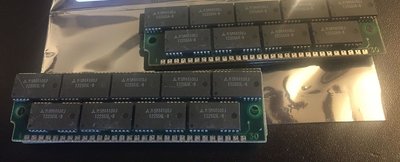First post, by eisapc
- Rank
- Member
I have tons of discarded PS/2 SIMMs of low capacity from 4-8 MB, but only very few 4 MB 30 pin SIMMs.
Idea is to order the PCBs from a chinese manufacturer and do the solderwork myself using the chips of the PS/2 SIMMs.
Question is if anybody here at vogons tried this before and what are the experiences? Probably a PCB layout even exists?
Other types of rare memory modules could be done the same way, as there comes to my mind:
- 16 MB 30 pin SIMMs
- 64 MB PS/2 SIMMs
- PS/2 with parity (usually added the chips myself as there are many layouts allready prepared for parity chips)
- some 5V unbuffered EDO DIMMs as used in PPro machines.
This post is just to check out if anybody else is interested in these PCBs so a higher quantity can be purchased, or at least the PCB layout can be shared.
My soldering experience on SIMMs by now is limited to adding parity chips and changing presence detect resistors, but I´m ready to take the challenge.
